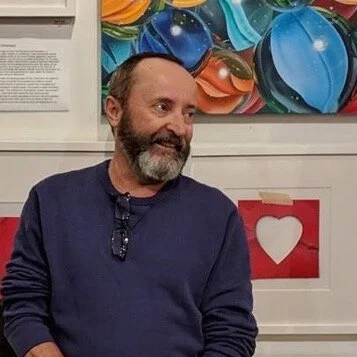Interview with artist Robin Trevor Tucker
Robin Tucker is a Little Rock artist who loves to turn trompe l’oeil on its head. He mastered old techniques and created new ones to achieve depth, shadow and reflection that are truly extraordinary. His works can be found at M2 Gallery and the Galleries at Library Square, both in Little Rock.
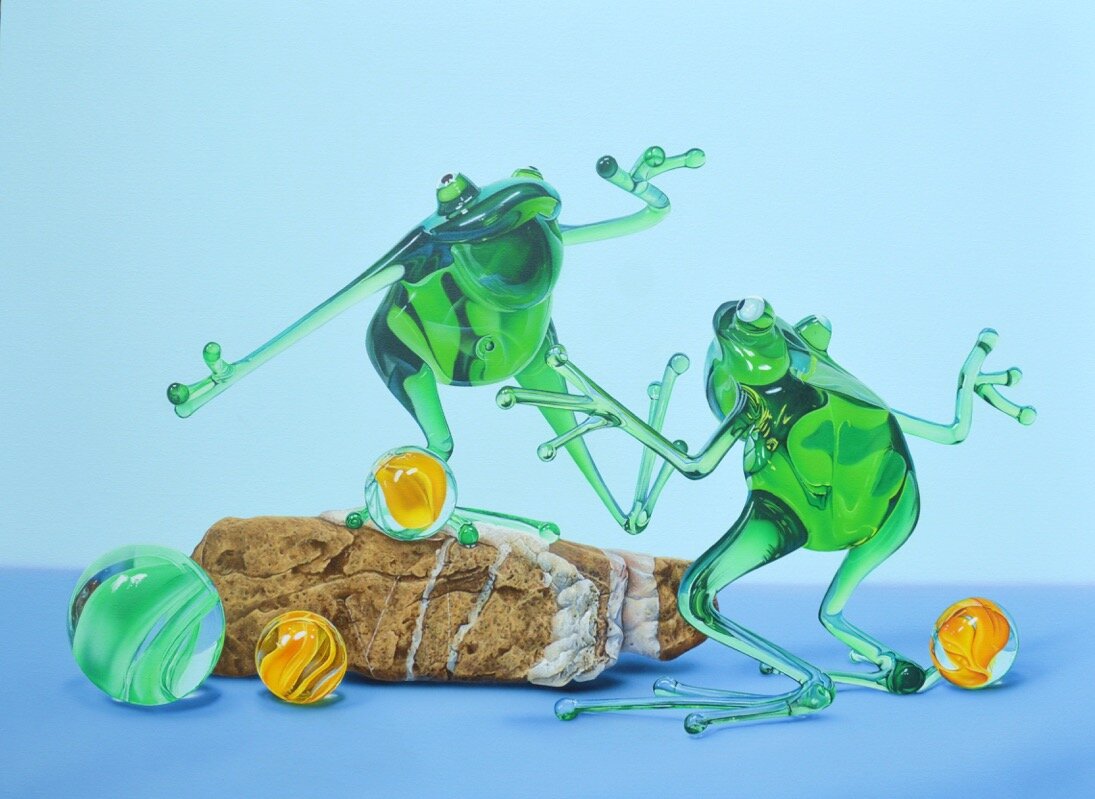
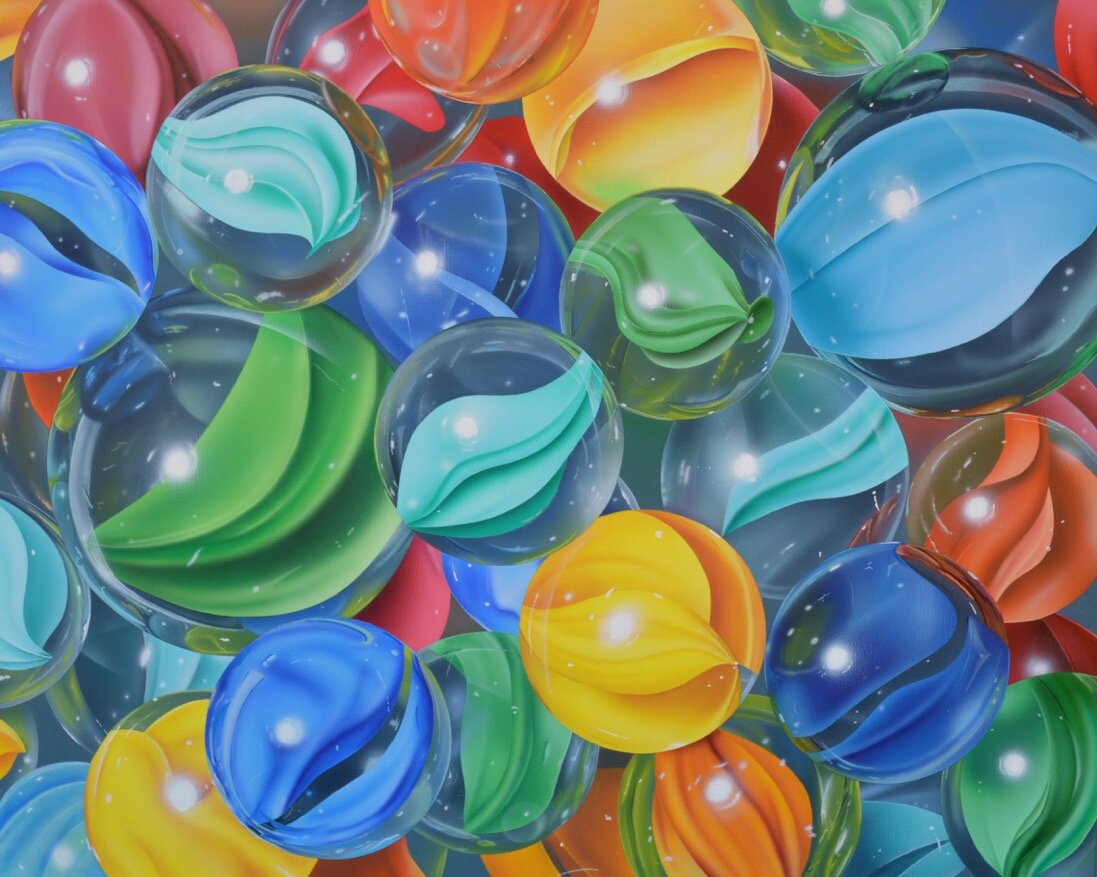
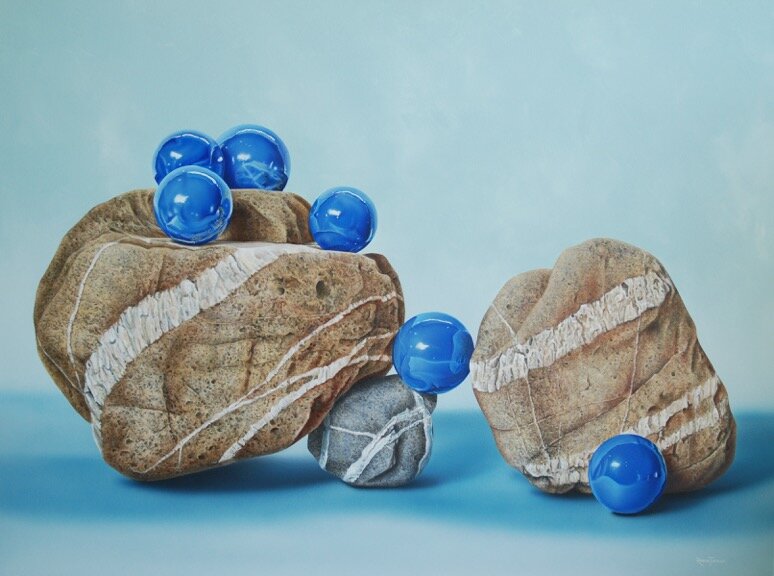
AAS: You describe your works as interpretive hyperrealism. What shaped your interest in this type of painting?
“Hyperrealism transcends the objects and gives them meaning - a life of their own.”
RT: I have always been interested in drawing and painting what is real - what is in front of me - what surrounds me. Even as a child I tried to recreate precisely what I was observing. I have always been attracted to artists who painted “realistically”. Caravaggio and Dürer were two early influences. I was also fascinated by album artwork of the 70’s and 80’s when airbrush album covers were at their peak. The airbrush always had a magical appeal for me. Creating a piece of art and not touching the surface. Magic. From there, I started discovering the photorealists. I couldn’t get enough. I practiced and practiced emulating what they were producing. It has taken years to even come close to some of them.
AAS: In looking through your body of work, I can’t help but see references to childhood – at least my childhood – marbles, rocks, candy, frogs. Do you paint these just because they are colorful or do they come from childhood memories?
RT: The objects you mentioned were part of my childhood too. I imagine they are universal to most people’s childhoods. I do like the colors and the shapes of these objects, but the underlying reason is that they represent an innocence - an innocence lost as we grow up. Simple objects most people don’t think about. I paint them larger than life to give them an elevated sense of purpose and meaning.
“There’s beauty in the basics. Pause and appreciate the rocks.”
Closer (For Comfort), acrylic on canvas, 40” x 30”
AAS: Can you describe your technical process to create such realistic shadows, shadings and reflections? They are really quite remarkable.
RT: It is years and years of studying light and shadows and reflections. Once the image has been drawn onto the canvas, I start by blocking in the background then blocking in color for the particular objects. I use an airbrush for the shadows and basic highlights. For me the airbrush can only do so much then it is up to my brushes to create the fine details. I also complete a particular object before moving on to another. I was not taught to paint that way but for me it works.
AAS: In addition to your canvases, you paint murals, create sets and environments. Talk about your background in design.
RT: I did post graduate work in illustration and graphic design at UALR. I never imagined working on a large scale. The first large project I did was in the late 80’s. It was a mural that encompassed an entire restaurant. A friend and I worked on it for months at night when the restaurant was closed. By the time we finished the restaurant closed. I think we made seventeen cents an hour after we added up time and materials. It was definitely a learning experience and it was noticed by a few people. That mural led us to Stone Ward Advertising. We worked on projects for them for several years including a few years doing sets and site pieces for Nickelodeon. It was another great learning experience and great fun. From there it went to working on murals in people’s homes, to other ad agencies, to Arkansas Children’s Hospital, to theaters, and later to churches, pediatric dental clinics, and production companies.
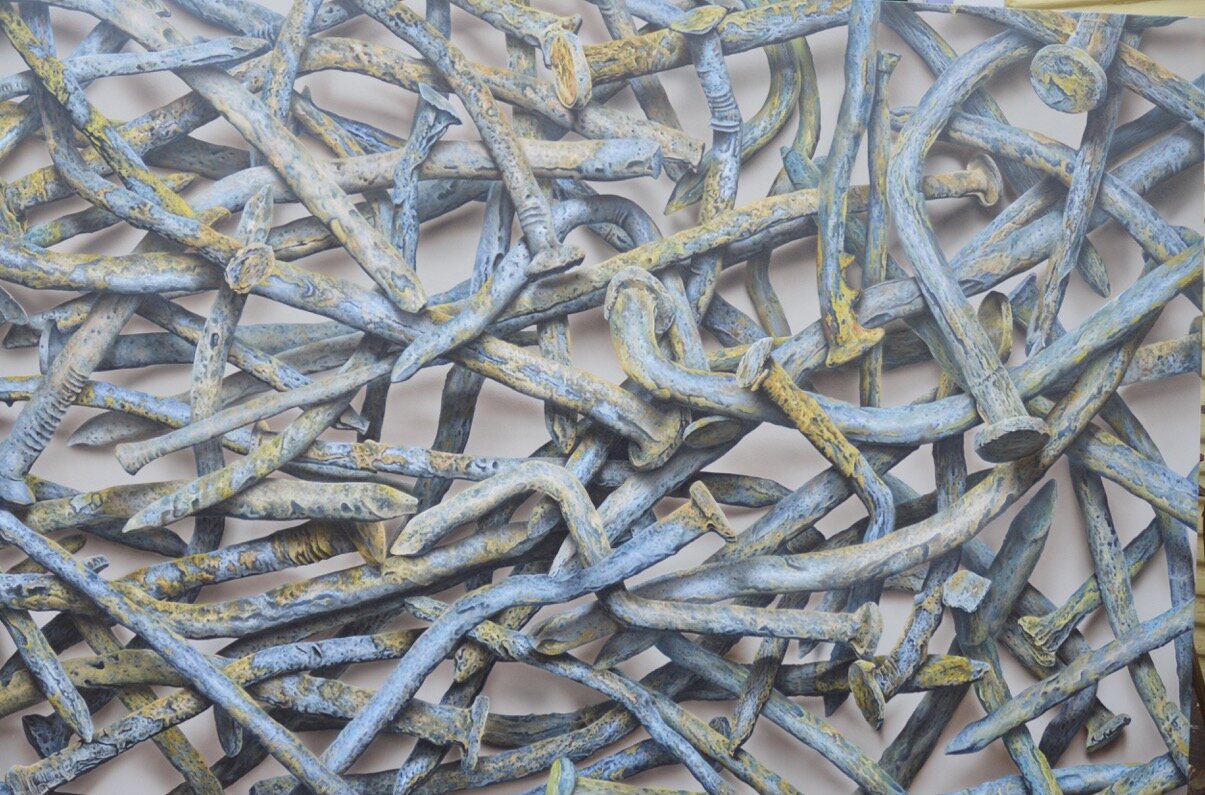
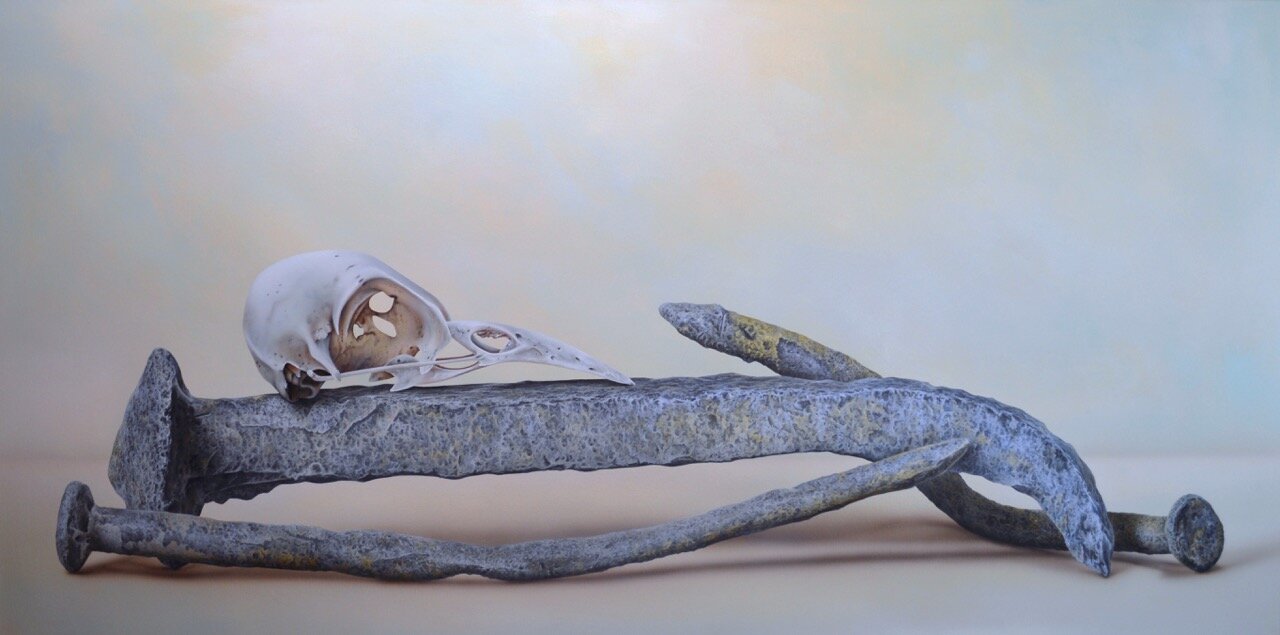
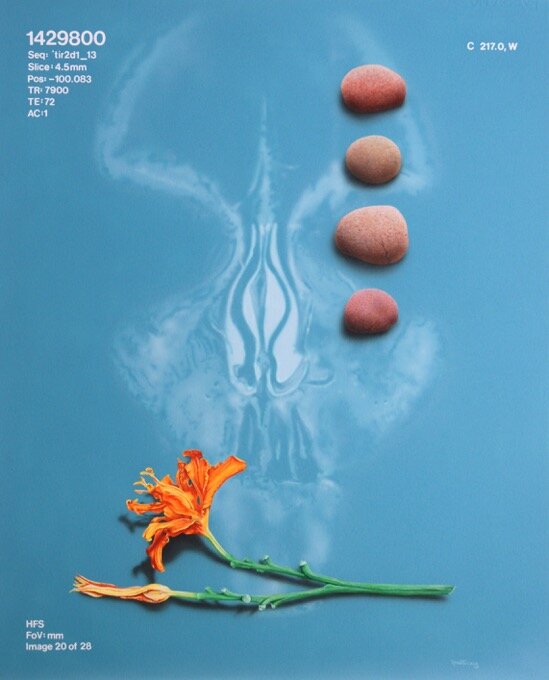
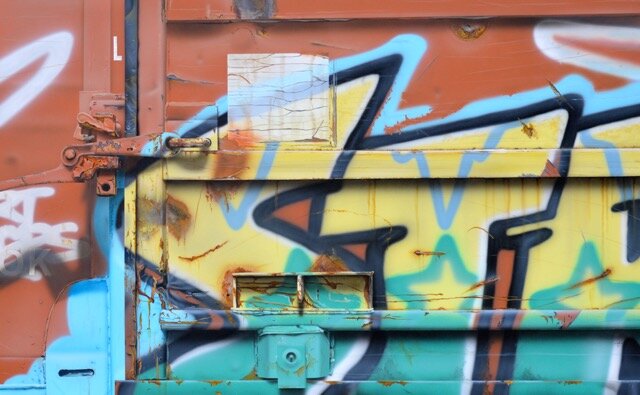
AAS: I first saw your work at the Butler Center (now called the Galleries at Library Square). You now show mostly at M2 Gallery. How has the art gallery scene changed in the last 10 years?
Hirst Meets Koons, acrylic on canvas, 48” x 48”
RT: To be honest I don’t keep up with the gallery scene all that much. I keep up with The Butler Center and M2 because they represent me. If I venture into another gallery it is usually because of a particular artist and I want to see their new work. I do like the fact that most galleries that were here ten years ago are still here.
AAS: Tell me about your experience with the Delta Exhibition. You earned a Delta Award in 2014. That must have been exciting.
RT: I can’t tell you how many times I have entered the Delta Exhibition and been rejected. The first time I was accepted was in 2014 and I won a Delta Award. I was shocked and extremely elated. It was a feeling of having finally made it. It was a very personal piece for me and that added so much to the joy of being accepted.
“The objects and compositions I create I have chosen for specific reasons. I paint them with respect for their history and the connection I hold with them to almost everything in the work.”
AAS: You are in the homes of major art collectors and average folks. What do you think makes your art so accessible to all types of art lovers?
RT: I’m not sure why exactly, but I’m proud of my art being in so many people’s homes. Perhaps it goes back to the objects themselves - a universality maybe? I think many people do not understand hyperrealism and dismiss it. I’ve heard many times, “Why didn’t you just take a photograph of it”. Hyperrealism goes beyond photography and has a personal connection that I rarely see in most photographs. Hyperrealism transcends the objects and gives them meaning - a life of their own. I like to think the collectors who own my pieces see that too.
Grace And Faith, acrylic on canvas, 48” x 72”
56th Delta Exhibition Award Winner (2014)
